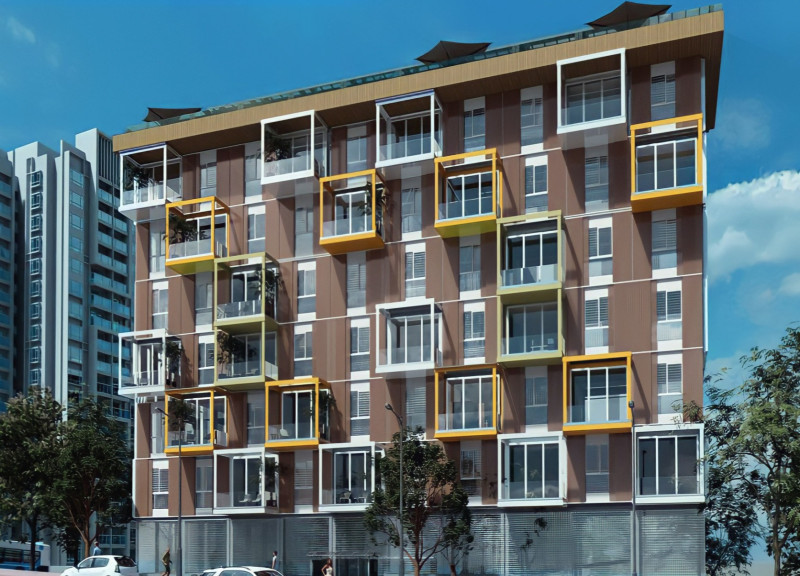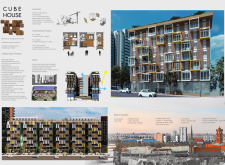5 key facts about this project
At its core, the Cube House serves as a residential complex that not only provides shelter but also fosters a sense of community among its inhabitants. Each unit is designed as a modular cube, allowing residents to rearrange and customize their living spaces according to their personal needs. This adaptability addresses contemporary housing demands, where flexibility and individual expression are increasingly valued.
Key elements of the Cube House include its innovative use of materials and structural design. The primary materials consist of wood, glass, steel, reinforced concrete, and sustainable elements such as solar panels and green roofing. The façade is characterized by the strategic interplay of these materials, which not only enhances aesthetic appeal but also serves practical purposes. For instance, the integration of glass promotes natural light and visual connection to the surrounding urban environment, while wooden accents add warmth to the overall design. The durable steel and concrete elements ensure longevity and support the structural integrity necessary for multi-story living.
One of the standout features of the Cube House is its emphasis on ecological systems. The design incorporates solar energy collectors that reduce reliance on traditional energy sources, while rainwater collection systems enable water reuse, promoting resource conservation. Natural ventilation techniques have been thoughtfully integrated to enhance airflow, reducing the need for mechanical cooling. Such strategies reflect an architectural commitment to sustainability, addressing both environmental concerns and the efficiency of urban living.
The project also focuses on creating spaces that encourage social interaction. Communal areas are artfully woven into the design, with shared balconies and terraces inviting residents to engage with one another. This careful consideration of communal spaces serves to strengthen neighborhood ties, reflecting the growing importance of community-oriented living environments. The architectural layout enables variations in density, accommodating different family sizes and demographics, which further enhances its adaptability.
Unique design approaches are evident throughout the Cube House project. The modular construction not only facilitates efficient assembly but also allows for potential reconfiguration in response to changing urban landscapes. The project’s configuration offers a blend of low, medium, and high-density living options, making it versatile for varied urban contexts. Additionally, accessibility is prioritized, with designs in place to cater to mobility-impaired individuals, showcasing a thoughtful and inclusive approach to architecture.
Overall, the Cube House project stands as a compelling example of modern architectural design that responds to societal needs while respecting the environment. By blending technical innovation with a focus on community integration, the project challenges conventional living arrangements and paves the way for future developments in urban architecture. For those interested in gaining a deeper understanding of the design processes and ideas behind this project, a review of the architectural plans, sections, and designs will provide further insights into the thoughtful details that make the Cube House an interesting case of contemporary architecture.























